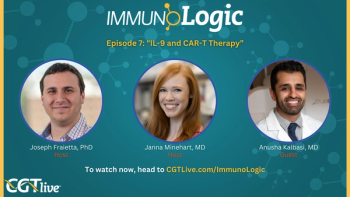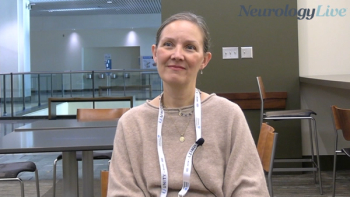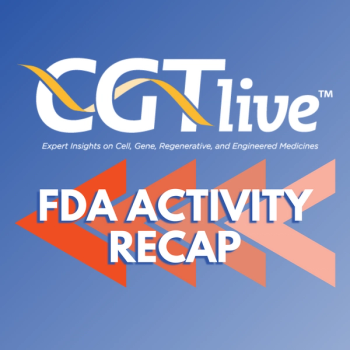
Dendritic Cell Vaccines Offer Promising Signals as Glioblastoma Therapy
Immunotherapy is rapidly emerging as a very attractive and novel therapeutic approach for cancer, including for glioblastoma multiforme (GBM), the most common primary malignant brain tumor in adults.
Arnold Etame, MD, PhD
Moffitt Cancer Center
Neuro- Oncology Program
Tampa, FL
Immunotherapy is rapidly emerging as a very attractive and novel therapeutic approach for cancer, including for glioblastoma multiforme (GBM), the most common primary malignant brain tumor in adults.1
For patients with this malignancy, the current multimodal therapy of surgery, chemotherapy, and radiotherapy is often ineffective. Consequently, higher rates of tumor recurrence and progression are often the rule with GBM, and the prognosis is very dismal. Patients have a median survival of less than 15 months.2 Furthermore, by the fifth year of diagnosis, more than 90% of patients are likely to succumb to the disease.3 Novel and effective alternative therapeutic strategies are therefore essential.
With immunotherapeutic approaches, cancer- specific immune responses can occur through several non-mutually exclusive strategies. These include activation of the immune system with tumor antigens; neutralization of tumor antigens with antibodies; enhancement of immune-stimulatory signaling pathways that promote cytotoxic T-cell activity; or adoptive T-cell tumor—targeting mechanisms.
Most immune-based therapeutic strategies for GBM have focused on the concept of vaccines, with the overwhelming majority of applications based on dendritic cells (DCs). The DC vaccine strategy was pioneered through the development of sipuleucel-T for the treatment of castration- resistant prostate cancer (CRPC). In a landmark study,4 Kantoff and colleagues demonstrated a significant improvement in overall survival (OS) for patients with CRPC who were treated with sipuleucel-T, helping to establish the foundation and enthusiasm for applicability to other cancers.
Strong Rationale for DC Vaccines
DCs are particularly attractive in vaccine applications because of their exquisite, efficient ability to present foreign antigens as antigen-presenting cells (APCs) to the immune system, thereby generating an antigen-specific adaptive immune response. With this approach, expanded clones of autologous DCs pulsed with either GBM cell lysates or tumor-derived peptides are used for the vaccine (Figure). It is anticipated that the DCs will recognize GBM cells bearing applicable antigens, thus leading to destruction of residual GBM tumor cells through adaptive immune-mediated mechanisms.
A major feature of this approach is its personalized cancer care focus, and the potential to target a broad range of tumor antigens. Potential limitations of this strategy include the requirement for surgical resection, as well as the labor-intensive and complex process of vaccine manufacturing. The safety, immunogenic potential, and effectiveness of DC vaccines pulsed with GBM tumor cell lysates or tumor-eluted peptides have been well established in preclinical5-10 as well as clinical studies.11-21 The preponderance of evidence suggests that the vaccine strategy is well tolerated, effective, and can improve overall survival in a tumor-specific, immune response—dependent fashion.
Figure. Typical Dendritic Cell (DC) Vaccine Scheme
Dendritic cells (DCs) obtained from differentiated monocytes in peripheral blood (red icon) are matured and then pulsed with tumor cell lysates, antigens, or peptides. The loaded cells are expanded and injected intradermally into patients, where the vaccine stimulates antitumor cytotoxic T lymphocytes (CTLs).
Lysates
One of the largest clinical studies of DC vaccines in GBM was conducted by De Vleeschouwer and colleagues.17 They safely treated 56 patients with recurrent GBM with DCs pulsed with autologous tumor lysate as postsurgical adjuvant therapy. There was a marked tendency toward improvement in both progression-free survival (PFS) and OS within the vaccination group.
Currently, Moffitt Cancer Center is participating in a multicenter phase III randomized double- blind clinical trial examining the efficacy of a DC vaccine, DCVax-L, derived from autologous DCs pulsed with GBM lysates (NCT00045968).22 The study, which began in December 2006, seeks to randomize 300 patients with newly diagnosed grade IV GBM in a 2:1 ratio to receive either DCVax-L or placebo. Participants are screened for the trial before they undergo surgical resection of the tumor; they then receive standard therapy, including radiation and temozolomide, before proceeding to randomization.
One of the critical lessons from initial clinical trial efforts with DC vaccines was correlating therapeutic benefits with immunogenicity. The first attempt to establish vaccine efficacy with immunogenicity on the DC platform occurred in a clinical trial by Wheeler and colleagues.18 When they treated 32 patients with GBM using DCs pulsed with GBM lysate, they clearly identified T-cell responsiveness as a variable that strongly correlated with a prolonged survival and prolonged disease progression time in the vaccinated cohort. Subsequent clinical studies have similarly assessed and confirmed correlation between immunogenicity and therapeutic benefit for such patients. Markers of immune responsiveness could facilitate optimal stratification of patients in the future.
Peptides
Synthetic peptides derived from tumor-associated antigens also have been employed in DC vaccines. The ease of manufacturing substantial amounts makes this approach attractive.
For GBMs in particular, the mutated epidermal growth factor receptor variant III (EGFRvIII) is a highly immunogenic target with surface expression in 30% to 40% of GBM.23 In preclinical orthotopic GBM models, a synthetic peptide derived from a segment of EGFRvIII demonstrated immunogenicity, significant antitumor activity, inhibition of formation of tumor in 70% of vaccinated animals, and ultimately resulted in long-term survivors.24
In a subsequent clinical study of newly diagnosed GBMs, the same research group was able to demonstrate EGFRvIII-specific immune responses secondary to vaccination using DCs pulsed with the synthetic peptide derived from a segment of EGFRvIII.25 Median PFS of 6.8 months and median OS of 18.7 months relative to onset of vaccination were realized, representing a significant improvement compared with match controls. Several additional clinical trials are under way examining EGFRvIII as a vaccine target.
In order to broaden the antigen coverage of DC vaccines, another approach has been to pulse DCs simultaneously with a panel of several tumor-associated antigen peptide. Using DCs directed against a panel of six glioma-associated antigen peptides, Phuphanich and colleagues demonstrated a median OS of 38.4 months in newly diagnosed patients with GBM who expressed at least three of the six antigens in a phase I clinical trial.26 Within the series of 15 patients, five patients demonstrated postvaccination T-cell responsiveness, as evidenced by CD8-positive and interferon gamma production. Based on these encouraging findings, placebo- controlled, randomized phase III studies using this six-peptide panel are under way.
Stem Cells
In addition, the strategy of employing DCs to target tumors antigens can be extrapolated to targeting cancer stem cells that serve as the ultimate drivers of therapeutic resistance and tumor propagation. There is preclinical evidence that DC vaccines can target the tumor stem cell—resistant clones if pulsed with stem cell–specific antigens.27,28 In a recent clinical study involving seven GBM patients treated with DC pulsed with mRNA from cancer stem cells, the investigators demonstrated the safety, feasibility, and potential for such an approach to positively influence PFS.29 Additional studies are warranted for further validation of this approach.
Evidence for Moving Forward
In summary, DC vaccine strategies have demonstrable clinical feasibility, safety, and efficacy in a subset of patients with GBM. Efforts at identifying humoral factors that correlate with vaccine efficacy as well as strategies that enhance T-cell responsiveness secondary to vaccination could have a significant impact. The theoretical risk of unintended autoimmune reactions to this vaccine strategy remains extremely low. Several clinical trials are under way looking at whole-tumor cell lysates, tumor-eluted peptides, synthetic tumor-associated peptides, and nucleic acids with exciting prospects. Our center is involved with some of these endeavors, notably the whole-cell lysate approach for patients with newly diagnosed GBM in a phase III clinical trial format.
References
- Ostrom QT, Gittleman H, Farah P, et al. CBTRUS Statistical Report: Primary Brain and Central Nervous System Tumors Diagnosed in the United States 2006-2010. Neuro-Oncol. 2013;15(suppl 2):ii1 — ii56.
- Stupp R, Mason WO, van den Bent MJ, et al. Radiotherapy plus concomitant and adjuvant temozolomide for glioblastoma. N Engl J Med. 2005;352(10):987-996.
- Stupp R, Hegi ME, Mason WP, et al. Effects of radiotherapy with concomitant and adjuvant temozolomide versus radiotherapy alone on survival in glioblastoma in a randomised phase III study: 5-year analysis of the EORTC-NCIC trial [published online March 2009]. Lancet Oncol. 2009;10(5):459-466.
- Kantoff PW, Higano CS, Shore ND, et al. Sipuleucel-T immunotherapy for castration-resistant prostate cancer. N Engl J Med. 2010;363(5):411-422.
- Siesjö P, Visse E, Sjögren HO. Cure of established, intracerebral rat gliomas induced by therapeutic immunizations with tumor cells and purified APC or adjuvant IFN-gamma treatment. J Immunother Emphasis Tumor Immunol. 1996;19(5):334-345.
- Ashley DM, Faiola B, Nair S, et al. Bone marrow-generated dendritic cells pulsed with tumor extracts or tumor RNA induce antitumor immunity against central nervous system tumors. J Exp Med. 1997;186(7):1177-1182.
- Liau LM, Black KL, Prins RM, et al. Treatment of intracranial gliomas with bone marrow-derived dendritic cells pulsed with tumor antigens. J Neurosurg. 1999;90(6): 1115-1124.
- Heimberger AB, Crotty LE, Archer GE, et al. Bone marrow-derived dendritic cells pulsed with tumor homogenate induce immunity against syngeneic intracerebral glioma. J Neuroimmunol. 2000;103(1):16-25.
- Aoki H, Mizuno M, Natsume A, et al. Dendritic cells pulsed with tumor extract-cationic liposome complex increase the induction of cytotoxic T lymphocytes in mouse brain tumor. Cancer Immunol Immunoth. 2001;50(9):463-468.
- Witham TF, Erff ML, Okada H, et al. 7-Hydroxystaurosporine-induced apoptosis in 9L glioma cells provides an effective antigen source for dendritic cells and yields a potent vaccine strategy in an intracranial glioma model. Neurosurgery. 2002;50(6):1327-1334; discussion 1334-1325.
- Liau LM, Black KL, Martin NA, et al. Treatment of a patient by vaccination with autologous dendritic cells pulsed with allogeneic major histocompatibility complex class I-matched tumor peptides. Case Report. Neurosurg Focus. 2000;9(6):e8.
- Yamanaka R, Abe T, Yajima N, et al. Vaccination of recurrent glioma patients with tumour lysate-pulsed dendritic cells elicits immune responses: results of a clinical phase I/II trial. B J Cancer. 2003;89(7):1172-1179.
- De Vleeschouwer S, Van Calenbergh F, Demaerel P, et al. Transient local response and persistent tumor control in a child with recurrent malignant glioma: treatment with combination therapy including dendritic cell therapy. Case report. J Neurosurg. 2004; 100(5 Suppl Pediatrics):492-497.
- Rutkowski S, De Vleeschouwer S, Kaempgen E, et al. Surgery and adjuvant dendritic cell-based tumour vaccination for patients with relapsed malignant glioma, a feasibility study. B J Cancer. 2004;91(9):1656-1662.
- Yamanaka R, Homma J, Yajima N, et al. Clinical evaluation of dendritic cell vaccination for patients with recurrent glioma: results of a clinical phase I/II trial. Clin Cancer Res. 2005;11(11):4160-4167.
- Liau LM, Prins RM, Kiertscher SM, et al. Dendritic cell vaccination in glioblastoma patients induces systemic and intracranial T-cell responses modulated by the local central nervous system tumor microenvironment. Clin Cancer Res. 2005;11(15):5515-5525.
- De Vleeschouwer S, Fieuws S, Rutkowski S, et al. Postoperative adjuvant dendritic cell-based immunotherapy in patients with relapsed glioblastoma multiforme. Clin Cancer Res. 2008;14(10):3098-3104.
- Wheeler CJ, Black KL, Liu G, et al. Vaccination elicits correlated immune and clinical responses in glioblastoma multiforme patients. Cancer Res. 2008;68(14):5955-5964.
- Prins RM, Soto H, Konkankit V, et al. Gene expression profile correlates with T-cell infiltration and relative survival in glioblastoma patients vaccinated with dendritic cell immunotherapy [published online December 6, 2010]. Clin Cancer Res. 2011;17(6):1603-1615.
- Ardon H, Van Gool SW, Verschuere T, et al. Integration of autologous dendritic cell-based immunotherapy in the standard of care treatment for patients with newly diagnosed glioblastoma: results of the HGG-2006 phase I/II trial [published online April 22, 2012]. Cancer Immunol Immunother. 2012;61(11):2033-2044.
- Ardon H, Van Gool S, Lopes IS, et al. Integration of autologous dendritic cell-based immunotherapy in the primary treatment for patients with newly diagnosed glioblastoma multiforme: a pilot study. J Neurooncol. 2010;99(2):261-272.
- NIH Clinical Trials Registry. www.ClinicalTrials.gov website. Identifier: NCT00045968.
- Wong AJ, Ruppert JM, Bigner SH, et al. Structural alterations of the epidermal growth factor receptor gene in human gliomas. Proc Natl Acad Sci U S A. 1992;89(7): 2965-2969.
- Heimberger AB, Crotty LE, Archer GE, et al. Epidermal growth factor receptor VIII peptide vaccination is efficacious against established intracerebral tumors. Clin Cancer Res. 2003;9(11):4247-4254.
- Sampson JH, Archer GE, Mitchell DA, et al. An epidermal growth factor receptor variant III-targeted vaccine is safe and immunogenic in patients with glioblastoma multiforme. Mol Cancer Ther. 2009;8(10):2773-2779.
- Phuphanich S, Wheeler CJ, Rudnick JD, et al. Phase I trial of a multi-epitope-pulsed dendritic cell vaccine for patients with newly diagnosed glioblastoma [published online July 31, 2012]. Cancer Immunol Immunother. 2013;62(1):125-135.
- Xu Q, Liu G, Yuan X, et al. Antigen-specific T-cell response from dendritic cell vaccination using cancer stem-like cell-associated antigens. Stem Cells. 2009;27(8): 1734-1740.
- Pellegatta S, Pollani PL, Corno D, et al. Neurospheres enriched in cancer stem-like cells are highly effective in eliciting a dendritic cell-mediated immune response against malignant gliomas. Cancer Res. 2006;66(21):10247-10252.
- Vik-Mo EO, Nyakas M, Mikkelsen BV, et al. Therapeutic vaccination against autologous cancer stem cells with mRNA-transfected dendritic cells in patients with glioblastoma [published July 2, 2013]. Cancer Immunol Immunother. 2013;62(9):1499-1509.
Newsletter
Stay at the forefront of cutting-edge science with CGT—your direct line to expert insights, breakthrough data, and real-time coverage of the latest advancements in cell and gene therapy.











































